Oleg V Komogortsev
Analysis of Embeddings Learned by End-to-End Machine Learning Eye Movement-driven Biometrics Pipeline
Feb 26, 2024Abstract:This paper expands on the foundational concept of temporal persistence in biometric systems, specifically focusing on the domain of eye movement biometrics facilitated by machine learning. Unlike previous studies that primarily focused on developing biometric authentication systems, our research delves into the embeddings learned by these systems, particularly examining their temporal persistence, reliability, and biometric efficacy in response to varying input data. Utilizing two publicly available eye-movement datasets, we employed the state-of-the-art Eye Know You Too machine learning pipeline for our analysis. We aim to validate whether the machine learning-derived embeddings in eye movement biometrics mirror the temporal persistence observed in traditional biometrics. Our methodology involved conducting extensive experiments to assess how different lengths and qualities of input data influence the performance of eye movement biometrics more specifically how it impacts the learned embeddings. We also explored the reliability and consistency of the embeddings under varying data conditions. Three key metrics (kendall's coefficient of concordance, intercorrelations, and equal error rate) were employed to quantitatively evaluate our findings. The results reveal while data length significantly impacts the stability of the learned embeddings, however, the intercorrelations among embeddings show minimal effect.
Eye Know You Too: A DenseNet Architecture for End-to-end Biometric Authentication via Eye Movements
Jan 05, 2022
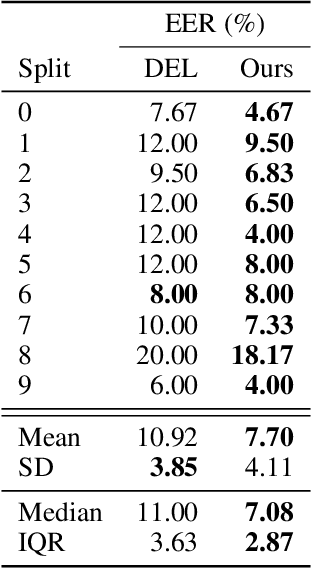


Abstract:Plain convolutional neural networks (CNNs) have been used to achieve state-of-the-art performance in various domains in the past years, including biometric authentication via eye movements. There have been many relatively recent improvements to plain CNNs, including residual networks (ResNets) and densely connected convolutional networks (DenseNets). Although these networks primarily target image processing domains, they can be easily modified to work with time series data. We employ a DenseNet architecture for end-to-end biometric authentication via eye movements. We compare our model against the most relevant prior works including the current state-of-the-art. We find that our model achieves state-of-the-art performance for all considered training conditions and data sets.
Eye Know You: Metric Learning for End-to-end Biometric Authentication Using Eye Movements from a Longitudinal Dataset
Apr 21, 2021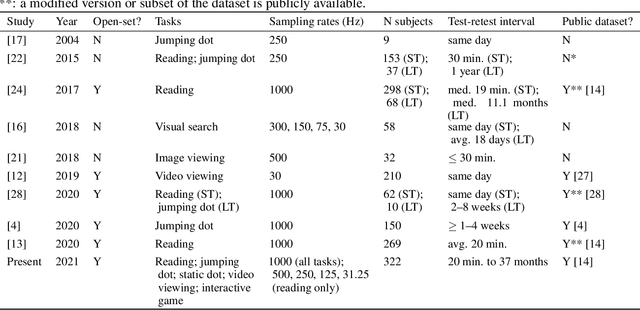
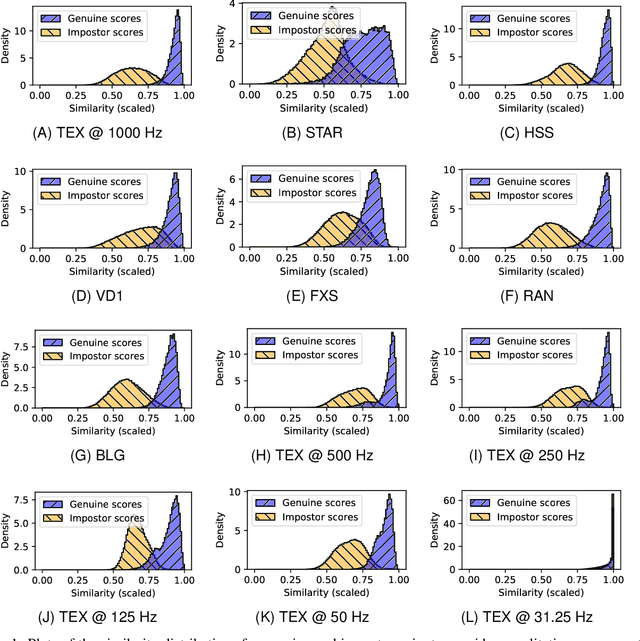
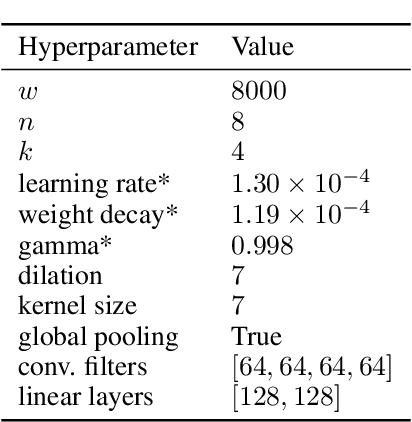
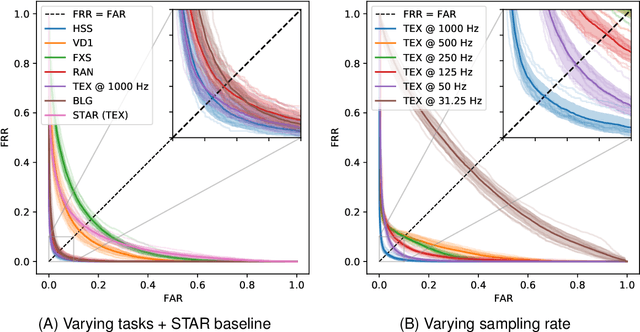
Abstract:While numerous studies have explored eye movement biometrics since the modality's inception in 2004, the permanence of eye movements remains largely unexplored as most studies utilize datasets collected within a short time frame. This paper presents a convolutional neural network for authenticating users using their eye movements. The network is trained with an established metric learning loss function, multi-similarity loss, which seeks to form a well-clustered embedding space and directly enables the enrollment and authentication of out-of-sample users. Performance measures are computed on GazeBase, a task-diverse and publicly-available dataset collected over a 37-month period. This study includes an exhaustive analysis of the effects of training on various tasks and downsampling from 1000 Hz to several lower sampling rates. Our results reveal that reasonable authentication accuracy may be achieved even during a low-cognitive-load task or at low sampling rates. Moreover, we find that eye movements are quite resilient against template aging after 3 years.
 Add to Chrome
Add to Chrome Add to Firefox
Add to Firefox Add to Edge
Add to Edge